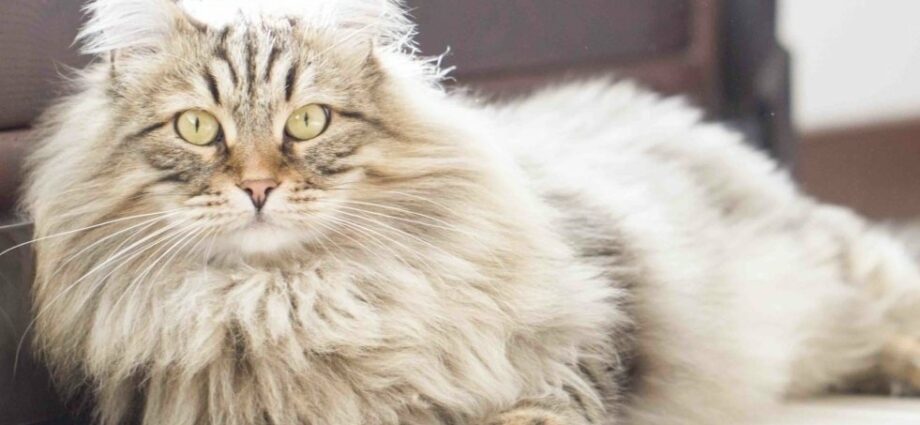Contents
Long-haired cat: how to maintain it?
Certain breeds of cats have long hair, such as the Persian, the Ragdoll, the Maine Coon, or the Norwegian forest cat. There are also many so-called European cats, therefore without race, adorned with long-haired furs. This trait is the result of a selection on the physique of cats and is accompanied by some consequences that it is good to know to ensure the good health of our cats.
Why maintain my cat’s coat?
The coat of cats does not only have an aesthetic function. Indeed, fur protects animals from temperature variations and injuries. The appearance of the hair is more strongly linked to the health of the skin it covers. Thus, dermatological disorders are generally accompanied by a degradation of the quality of the hair and, vice versa, a poorly groomed coat can lead to skin damage. It is therefore essential to ensure the good hygiene of the fur.
The consequences of a lack of grooming can be dermatological or cosmetic, with large knots or soiled hairs promoting skin damage under the clumps.
Also, when cats groom themselves, they naturally ingest a certain amount of hair. These hairs are then normally eliminated with the stool. However, in cats with long coats, it is common for these ingested hairs to form plugs called trichobezoars which will be vomited.
Sometimes the amount of hair passing through the stomach is such that it irritates the stomach wall causing gastritis. This can result in loss of appetite and vomiting with or without a hairball. In the worst case, the trichobezoar formed obstructs the intestines. There is then a loss of appetite, severe vomiting and often abdominal pain. If the obstruction is complete, treatment is surgical.
It is to prevent these different problems that it is important to maintain your cat’s coat, especially if it has long hair.
When should you pay special attention to coat care?
As a rule, cats take care of their coat spontaneously and do not require any intervention on our part. However, there are situations in which they cannot ensure the proper hygiene of their fur. On the one hand, our help may be required if there is a decrease in natural grooming behavior. This is common in cats of certain breeds, such as the Persian, in stressed or anxious cats, in sick cats or in aging cats.
In addition, some cats no longer have the physical ability to groom themselves properly. Indeed, this is the case of overweight cats, those suffering from painful conditions such as osteoarthritis or a fracture of the pelvis, for example, or those having to wear a straitjacket at all times. On the other hand, some cats have such a long and thick coat that they cannot provide the necessary care for the proper hygiene of their fur on their own.
Brushing, an essential care
In order to limit the amount of hair ingested, it is essential to brush long haired cats on a daily basis. Brushing is not always appreciated by cats. It is therefore preferable to accustom them to this manipulation from an early age, very gradually. It is also possible to use positive reinforcement to get the cat to tolerate or even enjoy brushing sessions, by associating them with meals, with treats or by following it up with a game or petting session, by according to your cat’s preferences. Once desensitized with the brush, you will then need to perform a meticulous brushing of the whole body to remove as much hair as possible and prevent the formation of knots. Brushing also stimulates the production of sebum and distributes it over the hair.
The choice of brush is also of great importance. Brushing will lose effectiveness if the tool used is not suitable for cat hair. There is a risk of not penetrating the undercoat or not removing enough hair, or even scratching the delicate skin of cats. It is therefore advisable to use a brush specially designed for the maintenance of cat fur. If your cat cannot tolerate the brush, it is also possible to run a damp washcloth over his coat to remove the excess of easily removable dead hair. This very gentle technique can represent an interesting compromise but remains less effective than assiduous brushing.
Soiled hair, how to fix it?
Long hairs are also susceptible to contamination, whether outdoors or in the event of illness such as diarrhea, for example. If your cat does not manage to clean itself, you can bathe and shampoo it (all or only on the affected area) provided you use a shampoo for cats, adapted to their skin pH. The bath should be followed by gentle drying with a terry towel. Using a hair dryer is often risky because the cat may be frightened and the risk of burns is not negligible.
However, the majority of cats do not tolerate baths. In this case, there are dry shampoos, usually in the form of foam, which are easy to apply. Followed by brushing, the dry shampoo cleans the coat and moisturizes the skin to limit skin irritation linked to soiling.
Long-haired cats require special care to maintain good coat hygiene, which is essential for their good health. These treatments are based above all on meticulous and regular brushing, with a suitable brush. In the event of contamination, conventional or leave-in shampoos can be used. Finally, in extreme cases where the fur is matted and resists brushing, mowing can be beneficial and help restore a healthy coat.










